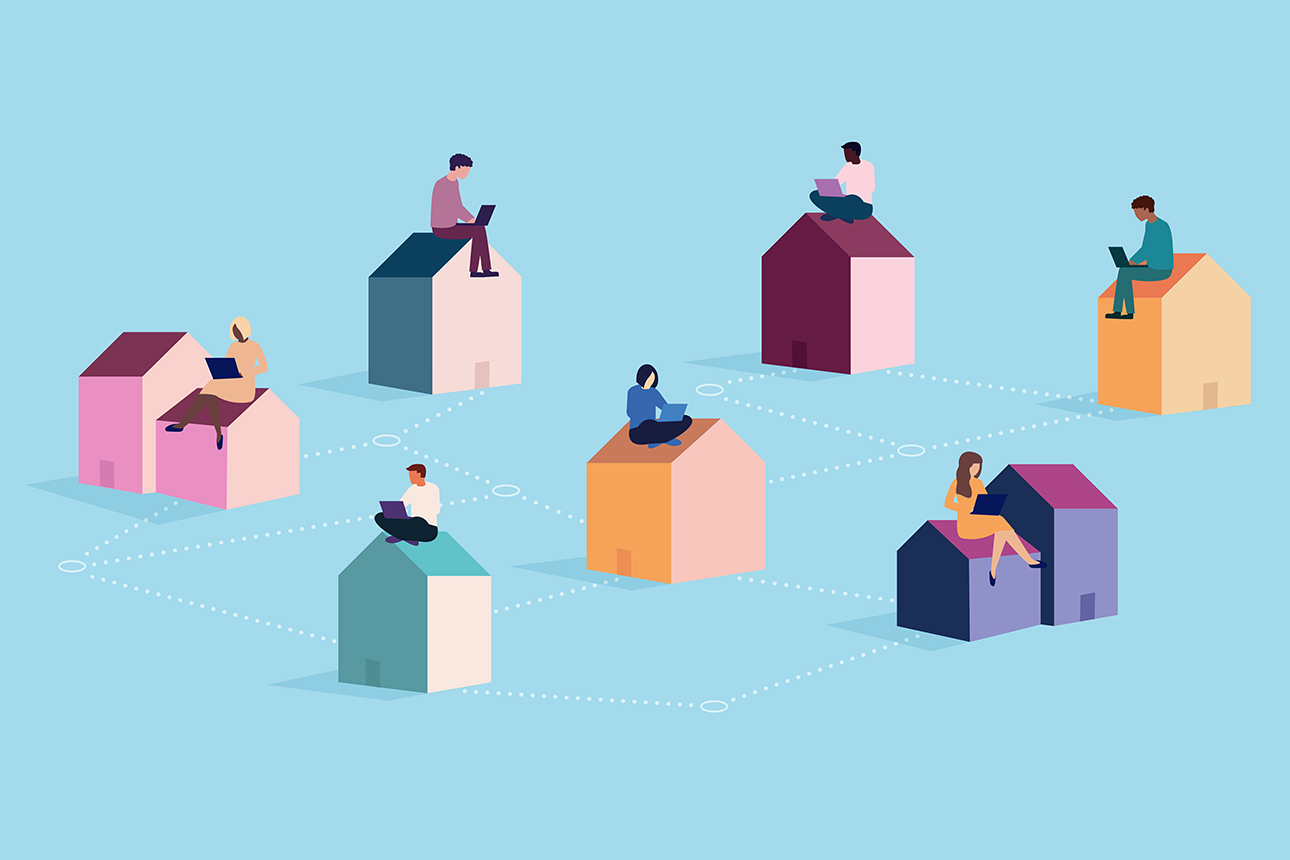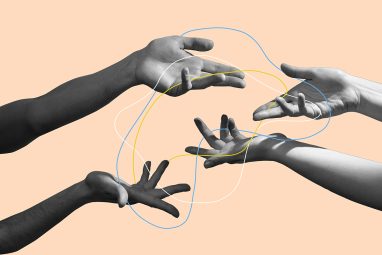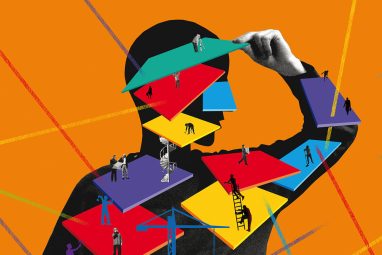Predictions for the Workplace of 2025, Revisited
Fifteen years ago, the author made predictions about the future of work. Here’s what she got right, where she misjudged, and what she learned about experimenting.
News
- Identity-based Attacks Account for 60% of Leading Cyber Threats, Report Finds
- CERN and Pure Storage Partner to Power Data Innovation in High-Energy Physics
- CyberArk Launches New Machine Identity Security Platform to Protect Cloud Workloads
- Why Cloud Security Is Breaking — And How Leaders Can Fix It
- IBM z17 Mainframe to Power AI Adoption at Scale
- Global GenAI Spending to Hit $644 Billion by 2025, Gartner Projects

Carolyn Geason-Beissel/MIT SMR
The beginning of a new year marks an auspicious moment to look forward. Our collective hope is that making predictions will help us anticipate what’s to come, potentially change tack, and even reveal blind spots.
But is predicting a worthwhile activity? And do predictions still have value if they turn out to be off the mark?
I have insight into this because, in 2009 and 2010, I set about imagining the workplace of 2025, which is now right on the horizon. My research team and corporate partners brought together through the Future of Work Consortium had the goal of constructing a day in the life of a range of fictitious people. Those insights became the book The Shift: The Future of Work Is Already Here, published in 2011.
How accurate were those predictions, both now and as they’re likely to unfold over the next year and into 2025? And, perhaps more importantly, in what way did the very process of making predictions prepare leaders — those who participated in the consortium and who read and talked about the book — for the changes in the workplace that were to come, especially since the disruption of the pandemic?
How My Predictions Played Out
I wanted to understand how multiple forces would act together in both positive and negative ways. I did this in The Shift by creating fictitious personas and imagining their daily lives in 2025. In the negative scenario, the “default future,” this understanding led to three dominant themes: fragmentation, isolation, and exclusion. In the more positive scenario, the “crafted future,” the dominant themes were cocreation, social engagement, and creativity.
A few things in particular stand out when I look back at what I imagined work would be like:
In 2009, I described the default future as one of fragmentation and isolation. Today, this is many people’s reality.
I imagined a 2025 negative default future shaped by ubiquitous connective technologies and the globalization of markets. I imagined a London-based woman named Jill who constantly flipped through her messages or was in virtual meetings — from Beijing in the morning right through to Los Angeles in the afternoon. I concluded that this fragmentation would compromise Jill’s capacity to observe and learn, as well as denude creativity of whimsy and a sense of play. Similarly, a persona called Amon, an independent freelancer living in Cairo, worked on digital IT projects for multiple companies. He depended on a freelance virtual agent who found him work and negotiated the fees. Amon, I envisaged, spent little time interacting with real people. I called it the “death of easy companionship.”
Today, the forces that would lead to a working day of fragmentation and isolation are indeed as strong as I visualized. The contributing factors include people’s migration from urban areas to megacities, often far from where they grew up, and living in smaller, less connected families. I saw how this isolation could result in declining trust in institutions — fanned in part by a media that holds a key role in both filtering and accentuating information about politicians and corporate executives. I wrote of social media occupying “an increasing role in the distribution of bad news,” with YouTube, Twitter, and Facebook all exposing “the deviant actions of corporations and governments within nanoseconds of the event.” I imagined that isolation would be exacerbated by increasingly passive leisure activities, such as watching TV. Researchers Marco Gui and Luca Stanca, I noted, described this behavior as a choice to “over-invest in income-producing activities and under-invest in relational activities.”
There is much that’s positive about 2024-style connectivity — but it’s shaded by downsides.
Many aspects of the 2025 positive scenario spoke to the theme of cocreation, the upside of connectivity. I described a day in the life of the imagined persona Miguel, who lived in Brazil, had studied in Copenhagen, and was passionate about sustainability and urban transport. He used a virtual platform to cocreate solutions with urban planners from Lucknow in India and engaged with a crowdsourcing platform that had 200,000 registered problem solvers. I described Miguel as an inhabitant of — and really a recipient of, too — a global, connected world, where knowledge had been digitalized and social participation was an exponential force. By the same token, under the theme “micro-entrepreneurship — creative lives,” I imagined 60-year-old Xui Li, a self-employed businesswoman living in Zhengzhou, China, who traded directly with clients, selling elaborate embroidered cocktail dresses through Alibaba. She loved the flexibility and freedom that independent work brought her.
For many workers, independent gig work is an unregulated, low-wage solution.
In 2024, both these types of collaborative ways of working, fueled by an ability to be connected to anyone from anywhere, have turned out to be entirely feasible — but not exactly as I had pictured. There are indeed highly skilled freelancers who base their work lives around platforms such as Upwork and Fiverr. But for many workers, independent gig work is an unregulated, low-wage solution where the platforms they use take a significant portion of the value they create.
The needs for flexibility and social engagement I predicted in 2009 are now firmly on the agenda.
In the more positive scenario, I explored how social engagement would evolve and intersect with work. I described how two middle-aged people, John and Susan, took a six-month sabbatical from John’s job at a U.S. retailer to work on water conservation in rural Bangladesh. They were reflective about their partnership and how they had gotten to where they were, with a working life “that has been actively crafted from making choices, rather than passively lived according to others’ standards.”
It is clear that the craving for autonomy and flexibility I described is one of the current challenging work themes. Across the globe, employees are asking organizations to reimagine new ways of operating, especially in terms of where and when they work.
Lessons Learned About Predictions
Looking back at The Shift and the predictions I made, four lessons resonate. I think they are useful for anyone who, at this time of year, is tempted to predict the future of work.
Don’t be myopic. It’s necessary to look across multiple forces, not simply one (like technology).
Right now, your predictions about 2024 are likely to have generative AI taking center stage. I am warning you that this could lead to a narrow focus. In the process begun in 2009, we cast a wide net, and this brought depth and breadth to the predictions.
By 2009, it was already clear that technology developments would profoundly shape work. At that time, it was projected that by 2025, 5 billion people would be connected on the internet and the cloud would be ubiquitous. I forecast that the result would be continuous productivity gains; an increase in social participation created by this connectivity; the digitalization of the world’s knowledge; ever-present avatars, virtual worlds, and cognitive assistants (more on them in a moment); and the emergence of megacorporations and micro-entrepreneurs. It was also well understood that technologies such as robots and simpler cognitive computing would begin to replace some human tasks.
But technology wasn’t the only story. The forces of globalization would have an impact on where work took place and, ultimately, on who worked. Significant economic growth was forecast in China and India, with a fast-developing global talent pool and continued move to urbanization. How long people could expect to work would be influenced by demography and longevity. Our predictions noted that life spans were increasing and the needs of Gen Y were more apparent, and they anticipated that countries like Egypt and Nigeria, with large populations of young people, would see an exodus from economic migration.
We predicted significant changes in society: the emergence of families with more diverse arrangements; an increase in the number of powerful working women; and fathers spending more time with their children. Looming over all these changes would be volatility in energy resources: This includes the increase in energy prices caused by the shortage of oil, environmental catastrophes displacing people, and the emergence of a culture of sustainability.
I detail all this to show that taking a broad view of both micro and macro issues in 2009 was crucial. It enabled us to make more accurate and nuanced predictions of how the workplace would evolve over the next 15 years. It’s a practice I would recommend.
Be prepared for unpredictable reversals and volatility.
Taking a broad view was useful, but looking back, I can see I made significant directional errors in my analysis. I was simultaneously too imaginative and at times not sufficiently imaginative. Take technology, for instance. I’d assumed, rightly, that people would be ever more connected virtually and that this would have a big impact on daily working life. But I also overestimated the speed of adoption of some technologies. For example, I’d imagined that by 2025, avatars and hologram phone calls would be in robust use. I also underestimated the speed and personal adoption of generative AI.
Another example: I assumed that globalization would continue regardless of the friction it came up against. I underestimated the rise of nationalism and of countries retreating rather than opening up, and the power of governments and their actions to shape working lives. This wrong assumption became obvious when, in 2018, I developed an elective course on the future of work at London Business School. I invited the political historian and commentator Adrian Wooldridge to speak about the checkered history of globalization. He left my MBA students (and me) with no doubt that globalization can reverse as quickly as it is built and that political turmoil and future wars would have a profound consequence on flows of knowledge, the migration of people, and the propensity of disparate stakeholders to work with each other.
I now realize that it is wise to seek the views of political commentators and historians in predicting the future and its role in the future of work. I didn’t do this in 2009, but I would certainly recommend it to anyone making predictions today.
You might not foresee global events like the pandemic. But once they occur, you should observe others’ experimentation closely.
Importantly, I did not predict the 2020-2023 global pandemic or the profound impact it would have on people’s working lives. If I had widened my net to include health care specialists, I might have factored in a pandemic as a low-probability/high-risk event.
However, once the pandemic began to unfold, I moved into active observation of the conversations and experiments that were taking place. I began keeping a daily journal, ran research-based webinars, and convened executive groups. I wanted to understand how leaders were coping with a world turned upside-down. This close observation enabled me to rapidly update my ideas about work in real time. I am doing the same now with the experimentation taking place around generative AI.
Creating scenarios and imagining a “day in the life” in the future brings deeper insight.
The scenario-planning process I used for The Shift brought insight and a broad framing that could be reconsidered when (inevitably) new assumptions were added. This is a process I have continued to use. I create scenarios and craft personas when thinking through tricky topics such as how to plan for a 100-year life and considering questions like, “What long-term impact will the pandemic have on executives’ viewpoint on working from home?”
My Predictions for This Year and Beyond
Looking forward, I can see the themes of isolation and fragmentation continuing to be a big factor in work. While our collective experience of the pandemic enabled some women and men to work effectively from outside the office, it also increased isolation for many home-based workers. No wonder I wrote extensively in 2023 about the power of friendship as a counterbalancing force. Expect an increasingly greater focus on connectivity, networks, and friendships.
People’s thirst for autonomy and flexibility will continue to be central. Expect more companies to provide both place flexibility (like working from home) and time flexibility (like taking a sabbatical). Those companies that do not will have to pay more for their privilege of inflexibility.
There will be greater emphasis on the power of the independent worker. As more people seek autonomous, self-governing work lives, skilled freelancers will increase in number. And remember that generative AI is in the hands of individuals. They are beginning to realize that their jobs are at risk of being replaced — not by a machine but, rather, by a human using a machine. They want to be that human.
My fourth prediction: It will be wise to expect the unexpected. And when it comes, be prepared to observe closely, pivot quickly, and experiment widely.





